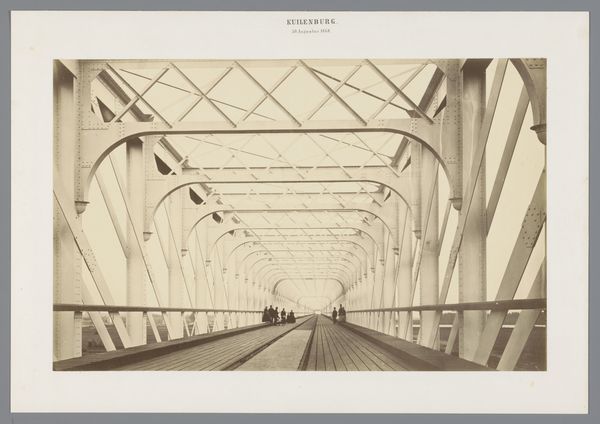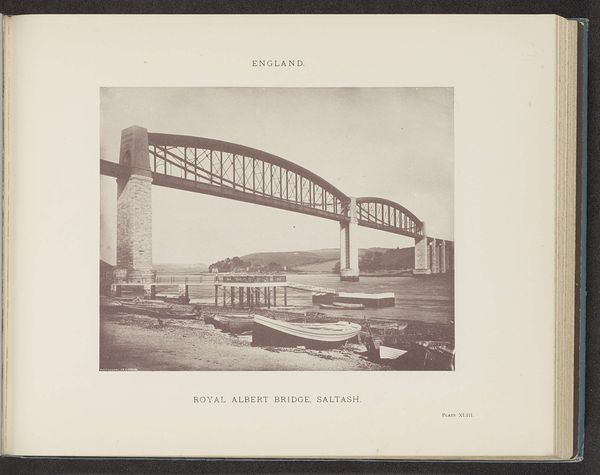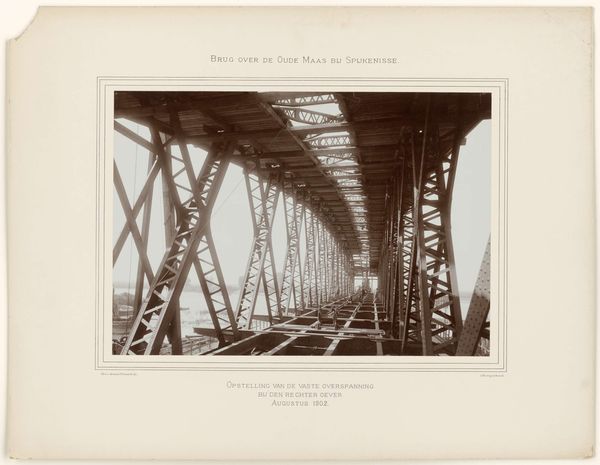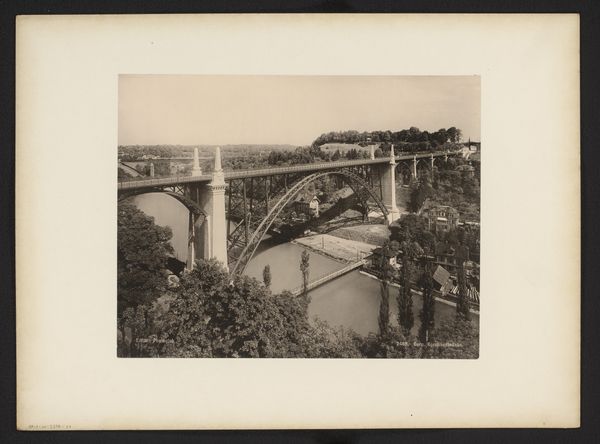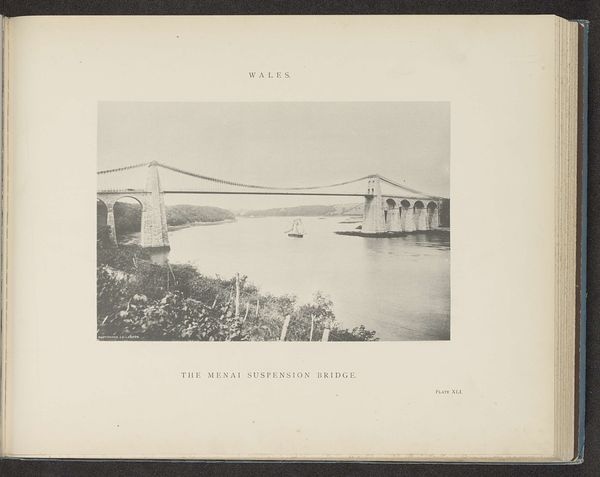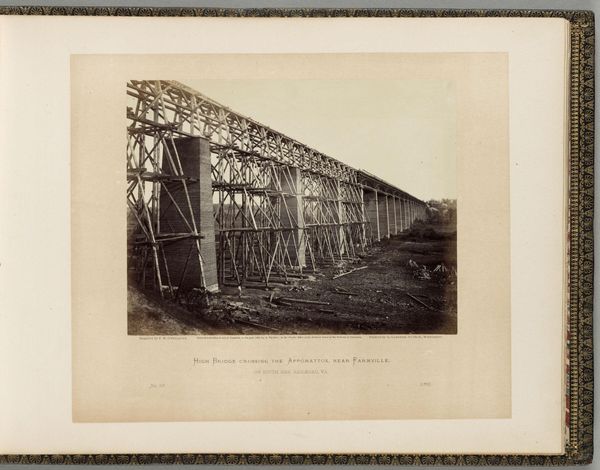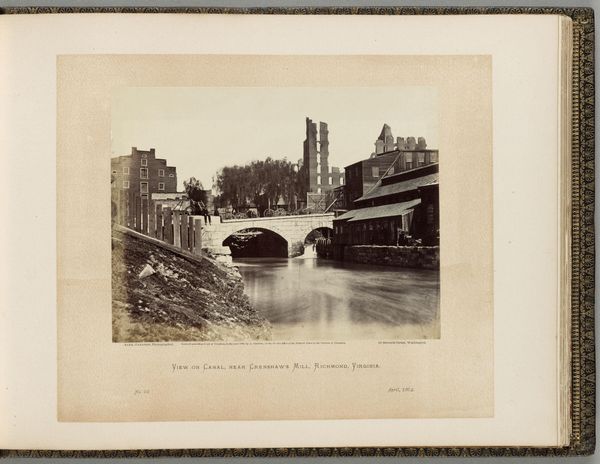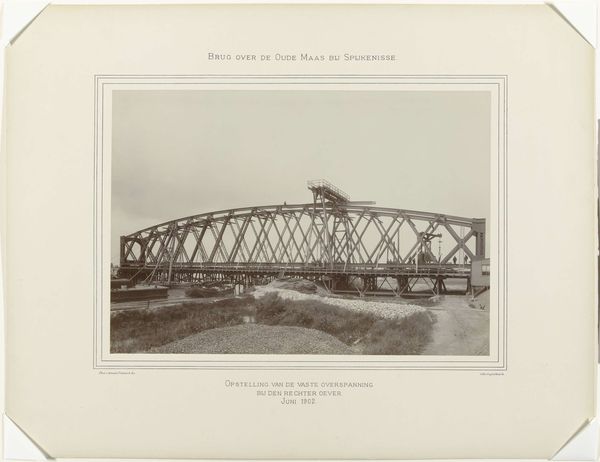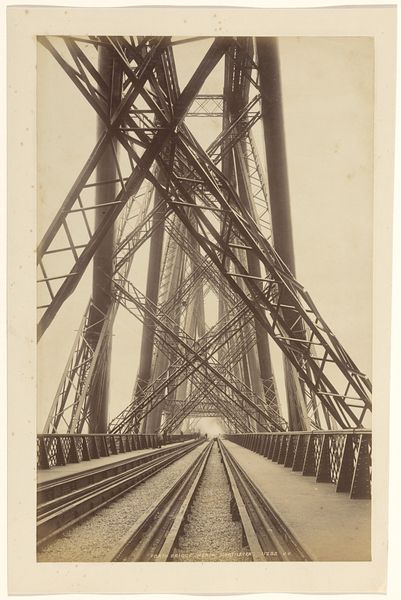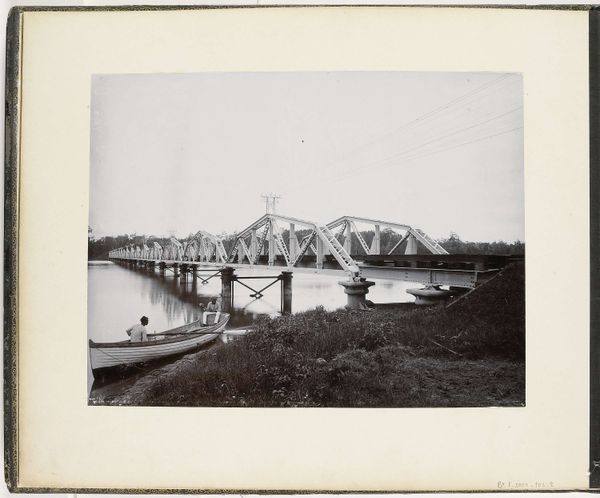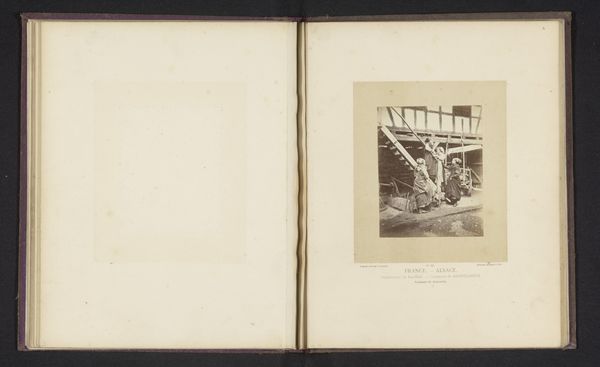
print, metal, photography
#
pale palette
# print
#
metal
#
landscape
#
street-photography
#
photography
#
geometric
#
cityscape
#
street
Dimensions: height 105 mm, width 183 mm
Copyright: Rijks Museum: Open Domain
Curator: Here we have an intriguing cityscape simply titled "Gezicht op de brug tussen Centralville en Downtown Lowell" -- a view of the bridge connecting Centralville and Downtown Lowell. It’s an early photograph, dating from before 1892, rendered as a print, possibly using metal as a base. Editor: My immediate impression is one of strong, stark geometry. The bridge's intricate latticework creates a compelling visual field, and the composition funnels the eye toward a distant vanishing point, almost creating the effect of depth of field within the black and white rendering. Curator: The "Little Canada" neighborhood of Lowell, was, at the time, heavily populated by French-Canadian immigrants seeking work in the textile mills. The bridge therefore takes on a deeper meaning: it symbolizes a link, both literal and figurative, between different communities within a rapidly industrializing urban space, pointing to socio-economic factors like work and home that might otherwise have kept these communities segregated. The photo seems almost documentary in this light. Editor: That’s an insightful read. From a formal perspective, the photographer makes very intentional use of light and shadow, really accentuating the repetitive, almost rhythmic patterns created by the bridge's structural supports. Note the deliberate positioning – almost framing – of architectural details at either end of the bridge. It draws your gaze down the street itself. Curator: It makes one wonder about access, not only physical but economic and political access: who crossed that bridge, who benefitted from it, and whose labor built it? The starkness in tones amplifies the disparities and reminds us that these landscapes are not neutral, politically or socially. Editor: Yet the very choice to document this scene, rendered with such visual clarity, is a conscious decision to celebrate industrial progress and civic connectivity, framing it, dare I say, as a heroic construction, as a marvel of human endeavor in this specific location and context. Curator: Yes, perhaps both—an ode to industry and also an unwitting testament to inequality and division within its system. Editor: Well, however we wish to look at it, it remains a rather captivating, surprisingly modern-looking photograph from the late 19th century. Curator: Indeed, its visual force keeps making us reflect upon the narrative it presents about place, class, labor and modernity.
Comments
No comments
Be the first to comment and join the conversation on the ultimate creative platform.
